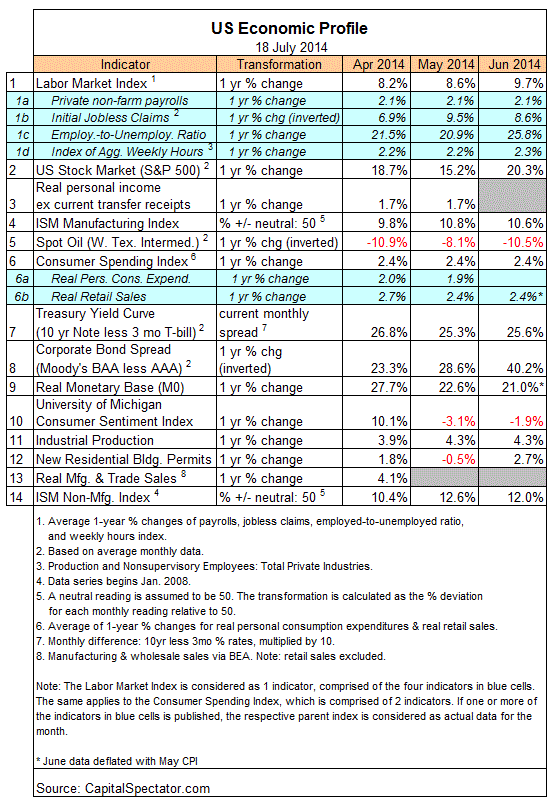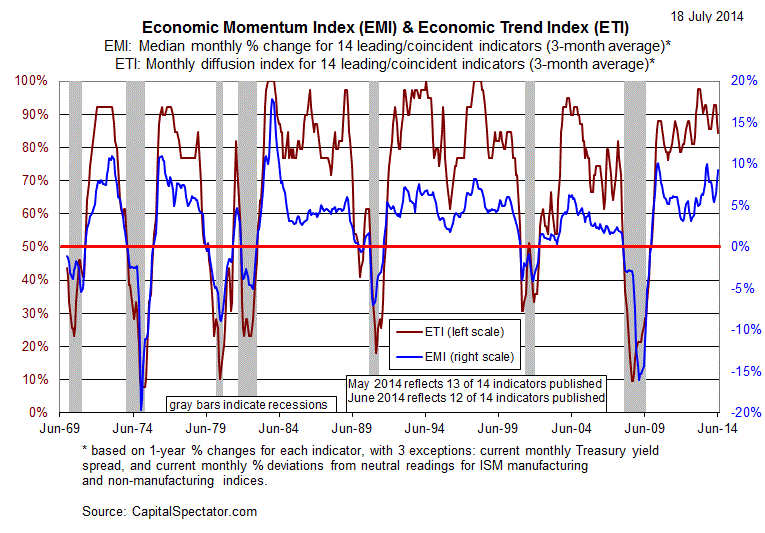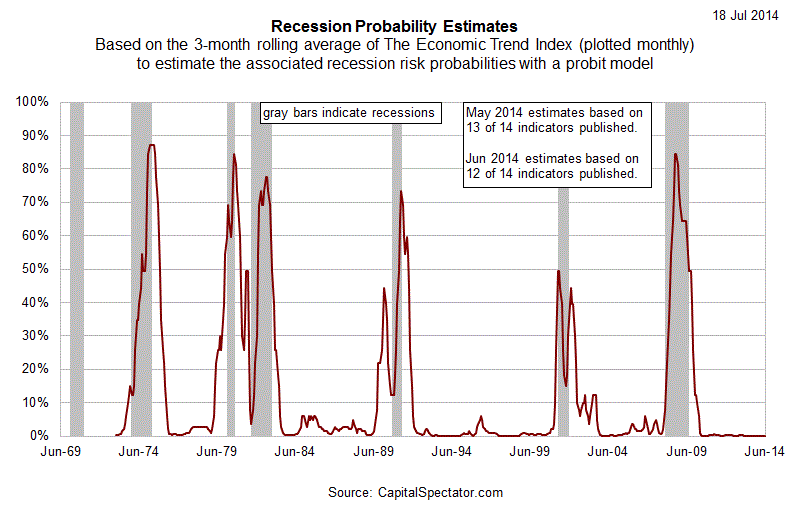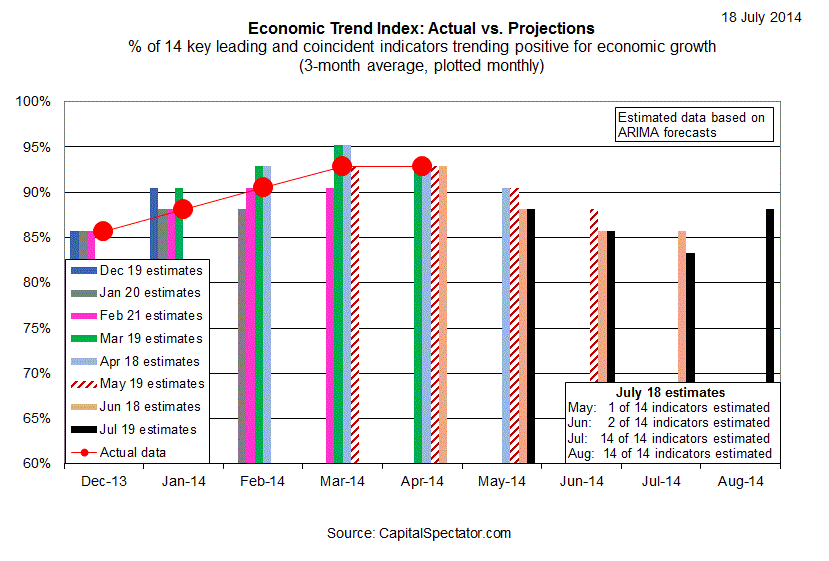There’s still plenty to worry about (or rant about) when it comes to macro analysis, but conspicuous signs of trouble are still the exception for the broad trend. The June update of a diversified set of 14 economic and financial indicators continues to reflect growth. Near-term projections point to a softer run for the expansion in the months ahead, but there are no overt hazards at the moment in terms of estimating business cycle risk.
Using a methodology outlined in Nowcasting The Business Cycle: A Practical Guide For Spotting Business Cycle Peaks, a broad review of economic and financial trends show that recession risk remains low. The Economic Trend and Momentum indices (ETI and EMI, respectively) remain at levels that equate with expansion.
Let’s dive into the numbers, starting with a summary of ETI and EMI’s individual components:
Reviewing the historical record for ETI and EMI shows that both business cycle benchmarks are well above their respective danger zones: 50% for ETI and 0% for EMI. When the indexes fall below those tipping points, we’ll have clear warning signs that recession risk is elevated. For now, however, there’s still a comfortable margin between current values for June (84.4% for ETI and 9.3% for EMI) and the danger zones.
Translating ETI’s historical values into recession-risk probabilities via a probit model also suggests that business cycle risk is low. To be precise, the data implies that the odds are virtually nil that the National Bureau of Economic Research (NBER)–the official arbiter of business cycle dates—will declare last month as the start of a new recession.
Now let’s consider how ETI’s values may evolve as new data is published in the near future. One way to estimate expected values for this index is with an econometric technique known as an autoregressive integrated moving average (ARIMA) model, based on calculations via the “forecast” package for R, a statistical software environment. The ARIMA model calculates the missing data points for each indicator, for each month through August 2014. (April 2014 is currently the latest month with a complete set of published data). Based on today’s projections, ETI is expected to remain well above its danger zone in the near term.
Forecasts are always suspect, of course, but recent projections of ETI for the near-term future term have proven to be relatively reliable guesstimates vs. the full set of monthly reported numbers that followed. (That’s not surprising, given the broadly diversified nature of ETI. Predicting individual components, by contrast, is prone to far more uncertainty in the short run.) As such, the latest projections (the four black bars on the right in the chart above) offer support for cautious optimism. The chart above also includes the vintage ETI projections published on these pages in previous months, which you can compare with the complete monthly sets of actual data that followed, based on current numbers (red circles). The assumption here is that while any one forecast for a given indicator is likely to be wrong, the errors may cancel one another out to some degree by aggregating a broad set of predictions into ETI.
For additional perspective on judging the value of the forecasts based on the historical record, here are the previous updates for the last three months:




I bought both your books. I read your blog regularly. This is a great status report on the ETI and EMI. You keep fear and greed at bay. Keep up the good work.
Pingback: Economic Updates